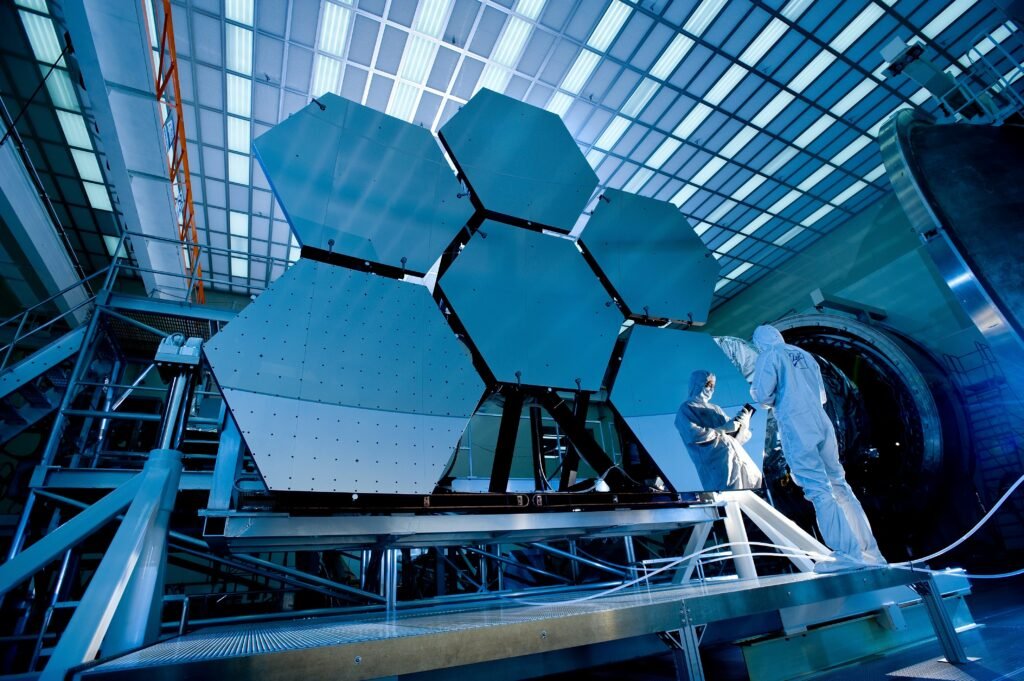In the vast expanses of the ocean, where towering structures extract precious resources from beneath the seabed, technology is paving the way for a new era of oil rig monitoring. Gone are the days of relying solely on manual inspections and guesswork to ensure smooth operations. Advanced technologies are now transforming how we monitor and manage oil rigs, bringing unprecedented levels of efficiency, safety, and reliability.
From remote sensing and IoT integration to predictive maintenance with AI, this blog post will delve into the exciting world of advanced technology applications in oil rig monitoring. Let’s embark on a journey through innovation as we explore how cutting-edge solutions are reshaping an industry that has long been at the forefront of progress. Join us as we unravel fascinating insights into these transformative technologies and their impact on offshore operations! So fasten your seatbelts (or life vests) – it’s time to dive deep into this electrifying topic!
Statistics on Advanced Technology Applications in Oil Rig Monitoring
Here are some statistics:
- The global offshore drilling market is expected to reach $56.97 billion by 2026.
- The increase in deep-water hydrocarbon production has placed significant demands on offshore platforms’ and vessels’ automation systems. These demands most frequently affect how these various automation systems are used to improve and increase deep-water production, particularly how those systems interface with one another.
- Advanced connectivity can optimize drilling and production throughput, improve maintenance and field operations, and enhance logistics.
- Based on the spatial data for offshore assets, including the oil rig, machinery, and supply chain, AI technology can create optimized schedules for maintenance protocols, reducing costs and increasing efficiency.
Advanced Technology Applications in Oil Rig Monitoring
1. Cutting-Edge Technology: Revolutionizing Oil Rig Monitoring and Operations
Oil rig monitoring has come a long way from relying solely on human intervention and manual inspections. Thanks to cutting-edge technology, the industry is witnessing a revolution that promises increased efficiency, enhanced safety measures, and optimized operations:
- One of the key advancements in oil rig monitoring is the integration of remote sensing and Internet of Things (IoT). This powerful combination allows real-time data collection from various sensors placed strategically across the rig. Operators can now monitor critical parameters such as temperature, pressure, vibration levels, and even environmental conditions like wind speed and wave height. The ability to access this wealth of information instantaneously enables decision-makers to make informed choices that can improve overall performance.
- In addition to remote sensing, artificial intelligence (AI) has also been making waves in the oil rig monitoring arena. Predictive maintenance powered by AI algorithms analyzes vast amounts of data collected from sensors and equipment readings. By detecting patterns and anomalies early on, operators can proactively schedule maintenance tasks before breakdowns occur. This predictive approach not only reduces costly downtime but also enhances reliability by preventing catastrophic failures.
- Robotic systems have become an integral part of offshore operations too. Robots equipped with advanced sensors and cameras are deployed for inspection purposes in hazardous areas or those difficult to reach for humans. These robotic inspections provide high-resolution imagery while keeping workers out of harm’s way.
- Data analytics plays a crucial role in extracting meaningful insights from the massive volumes of data generated during oil rig operations. Advanced algorithms analyze historical trends, identify potential bottlenecks or inefficiencies, and suggest optimization strategies for improved performance.
- Of course, with all these technological advancements comes the need for robust cybersecurity measures. As rigs become more connected through IoT devices and networks transmit sensitive information between platforms ashore, protecting against cyber threats becomes paramount.
- The future holds even more exciting possibilities for oil rig monitoring technology – autonomous drones patrolling rigs for surveillance purposes or virtual reality simulations allowing operators to remotely interact with offshore installations are just a couple of potential applications on the horizon.
Cutting-edge technology is revolutionizing oil rig monitoring and operations, bringing unprecedented levels of efficiency and reliability. With the right solutions in place, operators can maximize performance while ensuring the safety of their personnel and assets.
2. Remote Sensing and IoT Integration: Real-time Data for Informed Decision Making
Cutting-edge technology has transformed the way oil rigs are monitored and operated, leading to increased efficiency and safety:
- One of the key advancements in this field is the integration of remote sensing and IoT (Internet of Things) devices, which provide real-time data for informed decision making.
- Remote sensing involves using satellites or other aerial platforms to collect data about various aspects of an oil rig’s operations. This data can include information on weather conditions, temperature, pressure levels, equipment performance, and more. By integrating IoT devices into this process, companies can gather data from sensors placed throughout the rig in real-time.
- The advantage of real-time data is that it allows operators to make quick decisions based on up-to-date information. For example, if a sensor detects abnormal vibrations in machinery or a sudden increase in temperature at a certain location on the rig, operators can take immediate action to prevent any potential issues or accidents.
- Moreover, remote sensing and IoT integration enable predictive maintenance strategies. By analyzing historical data collected from sensors over time using artificial intelligence algorithms, companies can identify patterns that indicate when equipment is likely to fail. This proactive approach helps reduce downtime by allowing maintenance teams to schedule repairs before a breakdown occurs.
- Another benefit of combining remote sensing with IoT integration is improved asset management. Real-time monitoring provides valuable insights into energy consumption patterns and production rates across different parts of the rig. Companies can use this information to optimize operations by identifying areas where resources are being underutilized or wasted.
- Additionally, remote sensing combined with IoT devices allows for better environmental monitoring around oil rigs. Sensors can detect changes in air quality or water pollution levels near drilling sites and alert operators immediately so that appropriate measures can be taken promptly.
- While there are clear advantages to incorporating these advanced technologies into oil rig monitoring systems, it’s essential also to consider cybersecurity measures carefully. As more devices become connected through IoT networks on rigs’ infrastructure increases vulnerability risks associated with cyber threats targeting critical assets like drilling equipment or control systems.
The integration of remote sensing and IoT technology provides numerous benefits to the oil and gas industry, enabling informed decision making, predictive maintenance strategies, asset management, and environmental monitoring. However, companies must also take into account security measures to protect their data and assets from malicious actors.
3. Predictive Maintenance with AI: Enhancing Reliability and Reducing Downtime
The integration of artificial intelligence (AI) in oil rig monitoring has revolutionized the way maintenance is approached. Predictive maintenance, made possible through AI algorithms, enables operators to detect potential equipment failures before they occur, allowing for timely intervention and reducing costly downtime.
By analyzing real-time data collected from various sensors installed on the rig, AI algorithms can identify patterns and anomalies that may indicate an impending failure. This proactive approach allows maintenance teams to prioritize their efforts and resources effectively.
Moreover, predictive maintenance not only enhances reliability but also helps optimize operational efficiency. By identifying equipment issues early on, unnecessary shutdowns can be avoided, ensuring uninterrupted production schedules.
Additionally, by leveraging machine learning capabilities within AI systems, these technologies continuously improve their ability to predict failures accurately over time. This means that as more data is gathered and analyzed, the accuracy of predictions increases significantly.
Predictive maintenance with AI has become a game-changer in oil rig monitoring. It empowers operators to take preventive actions based on reliable insights rather than relying solely on reactive measures. In turn, this leads to increased uptime productivity and significant cost savings for oil companies operating in this dynamic industry.
3. Robotics and Automation: Improving Safety and Efficiency in Rig Monitoring
Robots and automation have revolutionized various industries, and the oil rig monitoring sector is no exception. These advanced technologies are enhancing safety measures and increasing efficiency in rig operations like never before:
- One of the key benefits of robotics in rig monitoring is improved safety for workers. Robots can be deployed to perform hazardous tasks such as inspecting pipelines or working in confined spaces, reducing human exposure to potential dangers. By taking on these risky jobs, robots help prevent accidents and protect workers from harm.
- Automation also plays a significant role in improving efficiency on oil rigs. With automated systems, routine tasks can be streamlined and performed with precision, eliminating the risk of human error. This leads to increased productivity and cost savings for operators.
- In addition to their physical capabilities, robots are equipped with sophisticated sensors that enable them to collect valuable data during operations. This real-time data provides insights into equipment performance, allowing for proactive maintenance rather than reactive repairs.
- Moreover, autonomous drones are being used for aerial inspections of rigs, capturing high-resolution images or videos that aid engineers in identifying potential issues quickly. These drones navigate challenging environments effortlessly and provide detailed visual information without risking human lives.
- Automation technology also includes remote-controlled vehicles capable of performing intricate tasks underwater or at great depths where humans cannot reach easily. These robotic vehicles allow for precise measurements and inspections that contribute to maintaining optimal operating conditions on the rig.
Robotics and automation bring numerous benefits to oil rig monitoring by improving safety measures while boosting operational efficiency through seamless integration into existing processes. As technology continues to evolve rapidly, we can expect even more advanced applications in the future that will further enhance performance optimization on offshore platforms.
4. Data Analytics and Visualization: Extracting Insights for Performance Optimization
Data analytics and visualization have become crucial tools in the oil rig monitoring industry, allowing operators to extract valuable insights for performance optimization. With large volumes of data being generated on a daily basis, it is essential to have effective methods for processing and analyzing this information:
- By utilizing advanced algorithms and machine learning techniques, data analytics can identify patterns and trends within the data that may not be immediately apparent to human analysts. This allows for more informed decision-making and the ability to proactively address potential issues before they escalate.
- Furthermore, visualizing the data through interactive dashboards and graphs provides a clear representation of key performance indicators (KPIs) in real-time. This enables operators to monitor various aspects of rig operations such as equipment health, production rates, and safety metrics at a glance.
- The ability to visually analyze this data also facilitates collaboration among different teams involved in rig monitoring. By sharing insights through easy-to-understand visualizations, operators can make collective decisions based on accurate information.
- Additionally, combining historical data with real-time analytics allows for predictive modeling. This helps identify potential bottlenecks or areas where efficiency can be improved within the rig’s operations. By optimizing workflows based on these insights, operators can enhance overall productivity while reducing costs.
Data analytics and visualization are powerful tools that enable oil rig operators to optimize performance by extracting actionable insights from vast amounts of raw data. By leveraging these technologies effectively, companies can improve operational efficiency while enhancing safety standards on offshore platforms.
5. Cybersecurity in Technology Integration: Safeguarding Rig Monitoring Systems
In the digital age, where technology plays a crucial role in oil rig monitoring, ensuring robust cybersecurity measures is of utmost importance. With advanced technology applications becoming more prevalent, it is essential to safeguard rig monitoring systems from potential cyber threats:
- One key aspect of cybersecurity is implementing strong authentication protocols. This includes using multi-factor authentication methods such as biometrics or token-based access control to prevent unauthorized access to critical systems and data. Additionally, regular password updates and encryption techniques can further enhance security measures.
- Another vital consideration is network segmentation. By dividing the rig’s network into separate segments with different levels of access privileges, the risk of lateral movement by hackers can be minimized. Implementing firewalls and intrusion detection systems can also provide an added layer of protection against malicious activities.
- Continuous monitoring and threat intelligence are essential components for maintaining cybersecurity in rig monitoring systems. Through real-time monitoring, any suspicious activities or anomalies can be quickly detected and addressed before they escalate into major security breaches. Regular vulnerability assessments and penetration testing should also be conducted to identify potential weaknesses that could be exploited by cybercriminals.
- Employee awareness and training programs are equally important for protecting against cyber threats. By educating staff about best practices for identifying phishing emails or social engineering tactics, they become the first line of defense against potential attacks. Conducting regular drills to test employees’ response capabilities will ensure that everyone remains vigilant at all times.
- Staying up-to-date with emerging technologies in cybersecurity is critical for safeguarding rig monitoring systems effectively. As hackers constantly evolve their strategies, it becomes necessary to adopt advanced tools like artificial intelligence (AI) algorithms that can detect patterns indicative of malicious intent.
Integrating robust cybersecurity measures within oil rig monitoring technology ensures the safety and reliability of operations while mitigating risks associated with cyber threats.
6. Future Trends: Anticipating the Evolution of Technology in Oil Rig Monitoring
As the oil and gas industry continues to evolve, so does the technology used in rig monitoring. Innovations are constantly being introduced to improve efficiency, safety, and productivity on offshore platforms. Let’s take a look at some of the future trends that we can anticipate in the evolution of technology for oil rig monitoring:
- One significant trend is the integration of artificial intelligence (AI) and machine learning algorithms into monitoring systems. These advanced technologies have the potential to revolutionize how data is analyzed and interpreted, allowing for more accurate predictions and proactive decision-making. AI-powered algorithms can detect anomalies in real-time sensor data, identify patterns indicative of equipment failure or inefficiencies, and even suggest optimized maintenance schedules.
- Another emerging trend is the use of drones for inspection purposes. Drones equipped with high-resolution cameras and sensors can provide detailed visual inspections without putting human lives at risk. They can quickly scan large areas of an oil rig for any signs of damage or wear, enabling operators to address issues promptly before they escalate into major problems.
- Blockchain technology also holds promise for enhancing transparency and security in rig monitoring systems. By using distributed ledger technology, all data related to equipment performance, maintenance records, and supply chain management can be securely stored and shared among stakeholders. This ensures that information remains tamper-proof while facilitating efficient collaboration between different parties involved in rig operations.
- Furthermore, virtual reality (VR) training programs may become commonplace as a means to educate workers on complex procedures without exposing them to potentially hazardous situations. VR simulations allow employees to practice emergency scenarios or learn new skills within a safe environment.
- Advancements in nanotechnology could lead to smaller sensors capable of collecting more precise measurements from critical components on rigs. These tiny devices would enable continuous real-time monitoring while occupying minimal space onboard.
The future looks promising when it comes to technological advancements in oil rig monitoring. With AI, drones, blockchain, VR training, and nanotechnology on the horizon, we can look forward to a new era of improved safety, efficiency, and productivity for the industry.
Conclusion
The application of advanced technology in oil rig monitoring has revolutionized the industry, improving efficiency, safety, and productivity. Through remote sensing and IoT integration, real-time data is now readily available to decision-makers, enabling them to make informed choices that can optimize operations. Predictive maintenance powered by AI has elevated reliability while reducing downtime on rigs. With the ability to detect anomalies and potential issues before they escalate into major problems, operators can address maintenance needs proactively.
Robotics and automation have played a significant role in enhancing safety measures and streamlining operations on oil rigs. These technologies enable tasks to be performed with precision and accuracy while minimizing human exposure to hazardous conditions. Data analytics and visualization tools have provided valuable insights for performance optimization. By analyzing vast amounts of data collected from various sensors across the rig system, operators can identify patterns or trends that may impact efficiency or equipment health.
Cybersecurity remains a critical consideration as technology continues to advance in rig monitoring systems. Protecting these interconnected networks from cyber threats is essential for maintaining operational integrity and safeguarding sensitive information. Looking ahead, future trends indicate even more exciting developments in oil rig monitoring technology. As artificial intelligence continues to evolve along with robotics advancements such as autonomous drilling capabilities, we can expect further improvements in safety protocols, operational efficiencies, and overall productivity.
The integration of advanced technologies holds tremendous promise for transforming how oil rigs are monitored and operated. It enables companies to stay competitive in an ever-changing landscape while ensuring sustainable practices for both people working on the rigs and the environment around them.
So whether it’s leveraging remote sensing capabilities or harnessing predictive algorithms through AI-driven platforms – there’s no denying that advanced technology applications are reshaping the way we monitor oil rigs today…and tomorrow!












